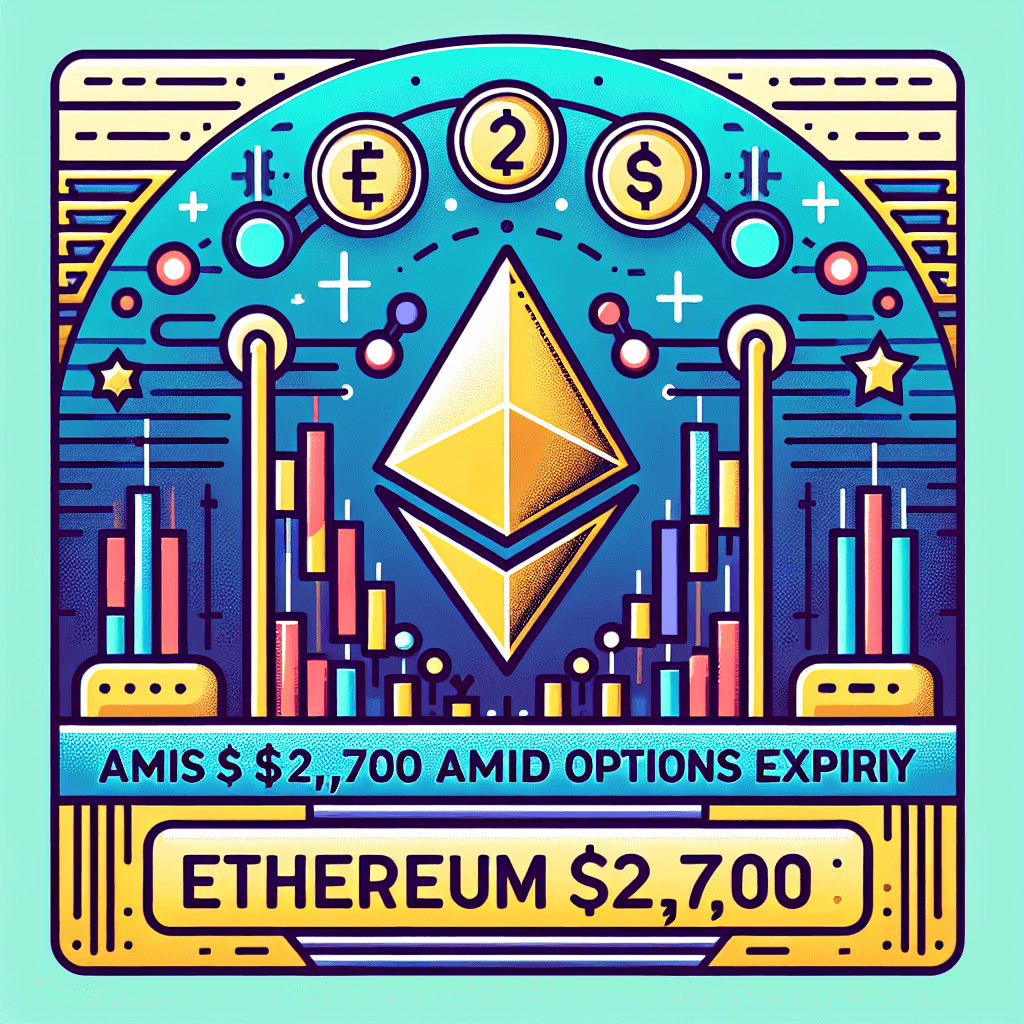Ethereum Aims for $2,700 Amid $2.4B Options Expiry

Key takeaways:
- Over $2.4 billion in ETH options expire May 30, with 97% of puts rendered worthless if ETH stays above $2,600.
- Implied volatility, gamma exposure and funding rates suggest a pivotal week ahead for Ether bulls and bears.
- On-chain metrics show waning network activity even as institutional ETF inflows pick up pace.
- Macro correlations to equities and Fed policy will likely cap Ether’s breakout potential in the short term.
With May’s monthly options expiry looming, Ethereum bulls have rallied to $2,650, eyeing that psychological $2,700 threshold. Deribit, CME and other venues list a combined $2.4 billion in open interest, nearly evenly split between calls and puts. However, 97% of put options are struck at $2,600 or below—levels that would expire worthless if Ether holds above that price at 08:00 UTC on May 30.

1. Options Structure and Premiums
Open interest in May includes $1.3 billion in calls and $1.1 billion in puts. While calls dominate by nominal value, many are part of spread and strip strategies that profit from skew shifts rather than outright rallies above strike prices. According to Deribit data, near-dated implied volatility (IV) has compressed from 58% to 52% over the past week, signaling short-term traders are reducing hedges ahead of the expiry.
1.1 Gamma and Delta Exposure
Market-makers hedging call exposure face a positive gamma environment above $2,600, incentivizing them to buy ETH spot as prices rise, which in turn can accelerate a short squeeze. However, if Ether dips toward $2,550, negative gamma could flip flows, causing rapid deleveraging. According to quantitative strategist Laura Chen at QuantAlpha, “Gamma-induced flows often amplify moves near large option strikes, but the net effect depends on cross-exchange funding rates and futures basis.”
2. On-Chain Metrics and Network Health
Despite macro-level optimism, on-chain indicators show mixed signals. Glassnode reports daily active addresses down 12% month-on-month, while Dune Analytics highlights a 20% slide in average gas usage per block. EIP-1559 base fee burn has fallen from a 12-month high of 3,200 ETH per day to around 2,400 ETH.
“Lower network throughput and declining fees suggest DeFi and NFT activity is rotating to layer-2s and alternative L1s,” says blockchain analyst Marcus Lai at TokenMetric.
2.1 Layer-2 and Competitor Impact
Solana, BNB Chain and Tron continue to gain market share in terms of total value locked (TVL). While Ethereum remains the sole altcoin eligible for a U.S. spot ETF, the rise of Arbitrum and Optimism has siphoned both volume and developer attention.
3. Macro Factors and Correlation to Equities
Ethereum’s correlation to the S&P 500 has hovered around 0.75 over the past quarter, making Ether susceptible to shifts in risk sentiment. With several major corporate earnings due this week and the Fed’s June FOMC minutes set for release, equity volatility could weigh on crypto markets.
Portfolio manager Evan Nguyen of Horizon Capital notes, “Any hawkish tone from the Fed will likely trigger deleveraging across crypto derivatives, particularly in high-beta names like ETH.”
4. Additional Analysis
4.1 Funding Rates and Leverage
Per Coinglass data, ETH perpetual swaps funding rates have turned marginally negative (-0.01%) on Binance and Bybit, indicating short-seller demand to maintain open positions. Negative funding can cap upside rallies, as long – short arbitrageurs earn carry by selling swaps.
4.2 ETF Inflows vs. Spot Liquidity
In the week to May 27, ETH ETFs in the U.S. saw net inflows of $287 million, according to Bloomberg. Yet on-chain liquidity in decentralized exchanges is tightening; Uniswap v3 liquidity around $2,650–$2,700 has fallen 15% in 24 hours, raising slippage risks for large buyers.
4.3 Scenarios at Expiry
Below is a refined view of theoretical profit and loss at expiry for open interest buckets (excluding complex spreads):
- $2,300–$2,500: $420 M calls vs. $220 M puts—net +$200 M for calls.
- $2,500–$2,600: $500 M calls vs. $130 M puts—net +$370 M for calls.
- $2,600–$2,700: $590 M calls vs. $35 M puts—net +$555 M for calls.
- $2,700–$2,900: $780 M calls vs. $10 M puts—net +$770 M for calls.
5. Conclusion
Ethereum bulls are incentivized to defend $2,600 and push past $2,700 before May 30’s 08:00 UTC expiry, leveraging positive gamma flows and ETF demand. Yet waning on-chain activity, tightening funding rates and macro headwinds from equity markets may cap the rally. Traders should monitor implied volatility, funding rate divergences and Fed communications to gauge whether Ether can sustainably breach $2,700 or revert lower into the month’s close.
Disclaimer: This content is for informational purposes only and does not constitute investment advice. Always conduct your own research or consult a financial professional before making trading decisions.